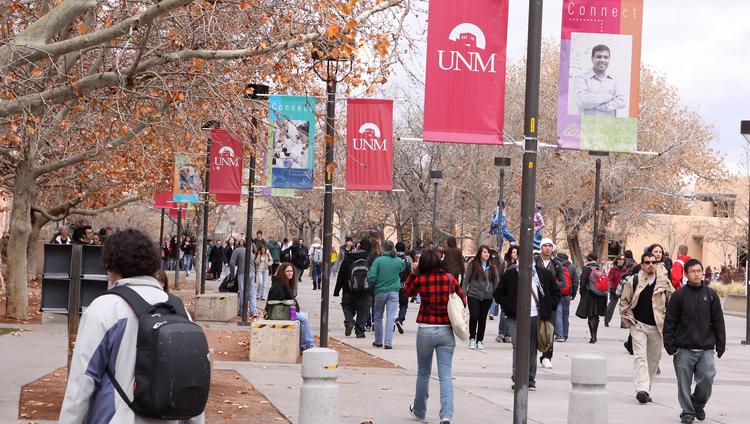
21 Mar The University of New Mexico Case Study
Date of Work: 2008 – 2009
Background:
After Arizona State University’s (ASU) success with implementing PIPS on their Dining service, the University of New Mexico (UNM), was quick to implement PIPS on their own Dining service contract.
Similarities between ASU Dining Service Project:
Some of the similarities observed at UNM with the ASU Dining Service Project are:
- The supplier could not state their plan in dominant terms. Thus, the contract drafted was unclear and required decision making to understand.
- The UNM management staff found it hard to release control and allow the supplier to take control of the service.
- The supplier in both cases knew how to drastically improve the dining service from what the University was currently providing.
- Both, the supplier and the buyer needed constant guidance and education to ensure that the BV PIPS process was being followed. The supplier needed education on how to dominantly relay their financials to the buyer.
- The supplier created a risk management plan that identified all of the items outside of their control that could impact the performance of the service, with plans to mitigate them.
PIPS Performance:
The UNM was satisfied with the results of implementing the PIPS/PIRMS factors on their dining services.
After the first year of the contract the following performance was documented:
- Total sales up 9% over prior year (3% higher than projections)
- Commissions up 57% over prior year
- $2.4M in Capital invested in Year 1
- Capital 20% higher than Incumbent proposal
The buyer’s staff was mixed in their feeling of the supplier’s performance. The upper management was very satisfied with the vendor’s performance. The lower level management was not as satisfied as the new paradigm of management eliminated their ability to be in control and make the decisions for the service.
The project manager and UNM staff were interviewed, and it became dominantly clear why the vendor was so successful. During the award, competitors of the best value identified that the best value vendor Chartwells would not be able to provide the financial results that they have offered. A change of paradigm was definitely needed.
The Chartwells project manager was not in the traditional university food services vendor model. He was a visionary. He decided to upgrade the offerings to the students. Instead of being conservative and catering to “poor students”, he brought in the most popular and expensive vendor from Albuquerque. They became the foundation of the food court. Their success brought other successful vendors into the food court. After the first couple of years, the Chartwell’s project manager Rudy Simchak had a backlog of six of the most popular food vendors in the local area, waiting for their turn to come on campus. The supreme compliment to Rudy Simchak was that his model was used in another winning best value proposal at Idaho State University (see Table 15.22).
| # | Category |
Incumbent FY08 |
Chartwells FY09 | Difference | % Difference |
| 1 | Mandatory Meal Plan Sales | $ 3,390,295 | $ 4,176,892 | $ 786,597 | 23% |
| 2 | # of Mandatory Meal Plans Sold | 3615 | 4152 | 537 | 15% |
| 3 | Voluntary Meal Plan Sales | — | — | — | — |
| 4 | Retail Sales (including sub-contractors) | $ 4,824,014 | $ 4,612,550 | $ (211,464) | -4% |
| 5 | Convenience Stores | $ 1,677,241 | $ 1,791,211 | $ 113,970 | 7% |
| 6 | Catering Sales | $ 1,481,203 | $ 1,809,895 | $ 328,692 | 22% |
| 7 | Conference/Camp Sales | $ 383,829 | $ 297,099 | $ (86,730) | -23% |
| 8 | All Other Sales | $ 65,114 | $ 190,332 | $ 125,218 | 192% |
| 9 | TOTAL REVENUE | $ 11,825,311 | $ 12,882,131 | $ 1,056,820 | 9% |
| 10 | Commissions Paid | $ 951,464 | $ 1,492,250 | $ 540,786 | 57% |
| 11 | Commissions Paid – % of Total Revenue | 8.05% | 11.58% | 3.54% | 44% |
Table 15.22: Financial Results of Chartwells
Chartwells has been able to meet their financial obligations and has continued to improve sales and total contributions to UNM. Table 15.23 shows that in 2012 Chartwells was able to continue their success in food sales and contributions towards UNM. This is despite some revenue streams being minimized.
| Sales | 2008 (Incumbent) | 2009 | % Increase from 2008 | 2010 | % Increase from 2009 | 2011 | % Increase from 2010 | 2012 | % Increase from 2011 |
| Total Revenue ($M) | 12.45 | 12.85 | 3% | 13.39 | 4% | 13.53 | 1% | 13.59 | 0% |
| Total Contributions ($M) | 1.63 | 2.42 | 48% | 2.91 | 21% | 3.20 | 10% | 3.20 | 0% |
Table 15.23: Total Chartwells Revenue and Contributions
Conclusion
The best value model is dominantly better than the traditional method of procuring food services at Universities. If the best value approach is implemented, where the vendor controls the food services, the financial return to the university is dominantly more than if the university managed the service. These results have been proven at three different universities with varying size and requirements. In every case, the best value vendor has exceeded expectations and financial returns.


